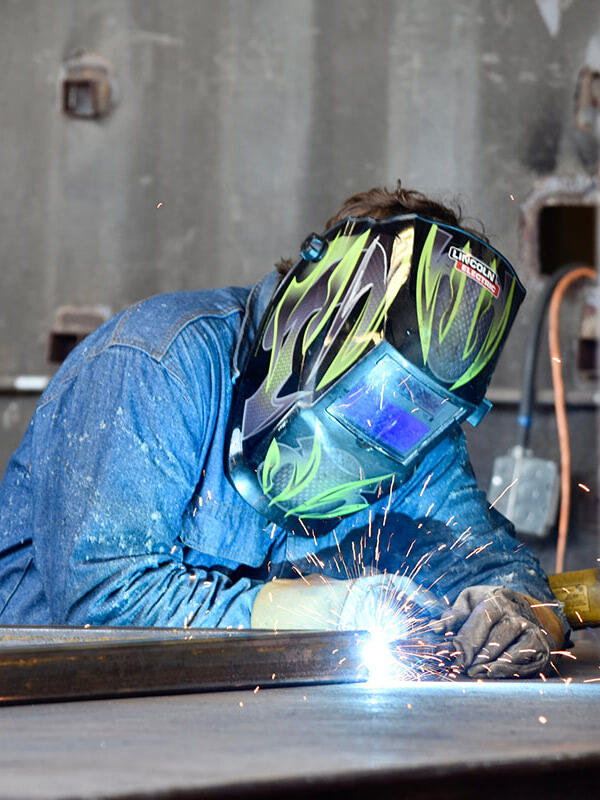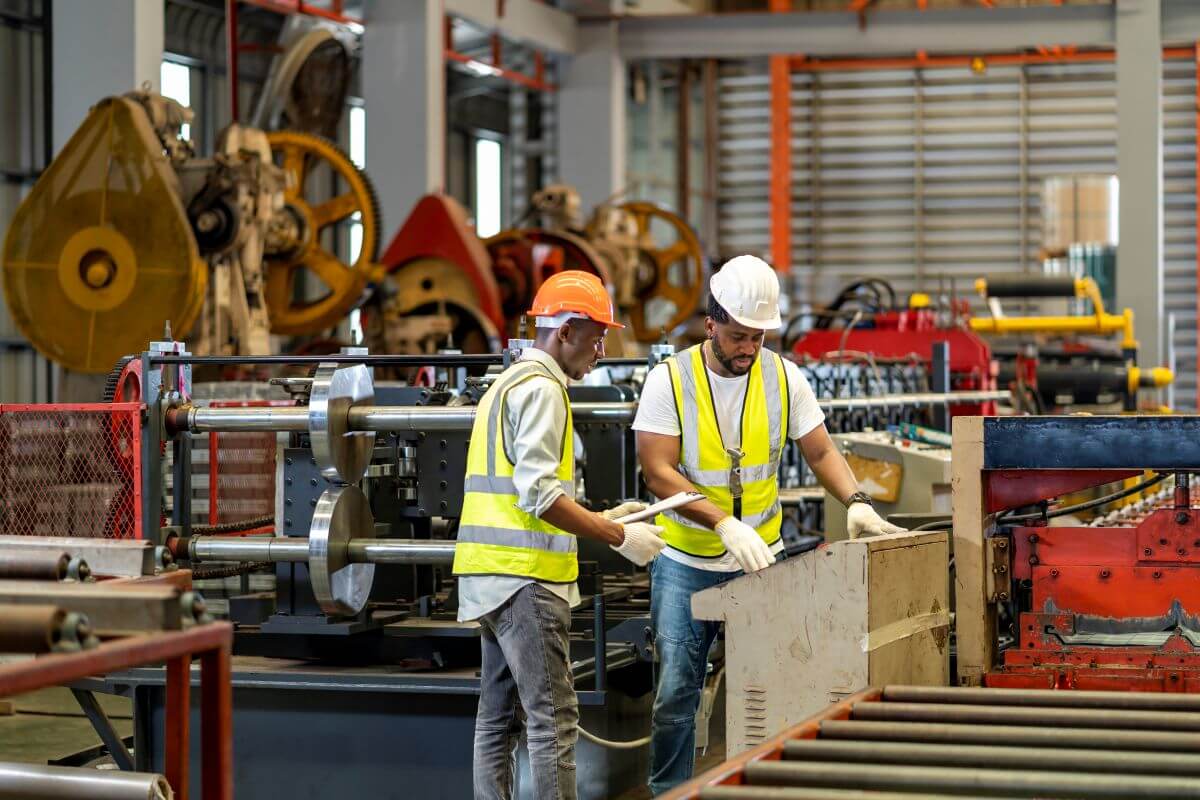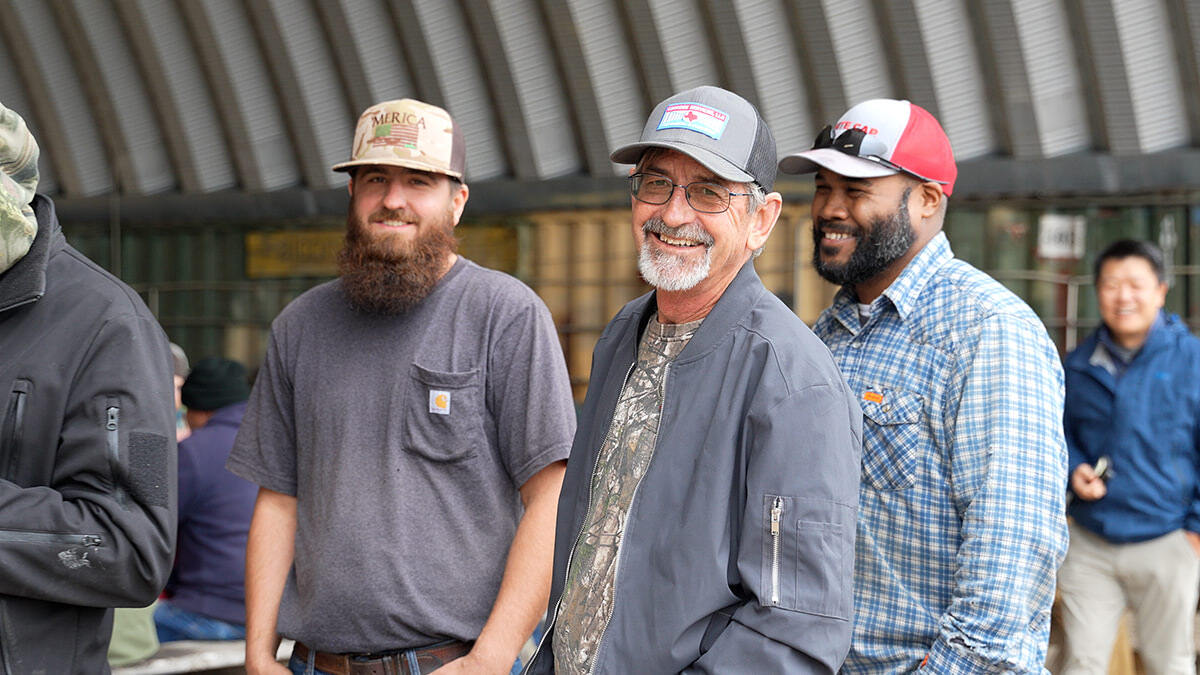Retention, Morale & Success:
Labor-intensive industries place immense demands on their workers. The physical toll is clear: Construction leads all industries in on-the-job deaths, and injury rates are equally concerning. The mental toll, though less obvious, can be just as severe. Research shows suicide rates are highest among those working in extraction, construction, and agriculture, respectively — a sobering statistic tied to deep-rooted issues of substance and alcohol abuse in these physically and mentally demanding blue-collar industries.
Beyond the personal toll on workers and their families, these challenges often drive turnover, burnout, and disengagement — all costly outcomes for businesses.
Could an outlook this bleak turn a little brighter? Absolutely — and here’s how: Employers that adopt a modern perspective, which recognizes tradespeople as vital contributors to business and economic success, prioritize employee advocacy through safety, empowerment, and recognition. In turn, these employers are driving better retention, higher morale, and long-term success.
Investing in worker well-being is more than an ethical choice; it’s a smart business strategy.
A safer, more engaged workforce starts with intentional action. Here are a few ways companies can proactively support worker well-being while boosting productivity and long-term success.
1. Create a Safety-First Culture
Implement a safety program
According to the American Society of Safety Professionals, companies that invest in comprehensive frameworks designed to proactively identify, assess, and mitigate potential risks and hazards can earn returns up to $4–$6 per dollar spent through reduced insurance claims, legal fees, and improved productivity.
Foster friendly competition
Creating reward-based safety initiatives can enhance worker engagement, improve knowledge retention, and go a long way toward fostering a culture centered around safety. Introduce safety awards, contests, challenges, or quizzes to motivate teams and promote safe work practices. Prizes could include extra PTO, gift cards, or bonuses.
Prioritize proper safety gear
Well-fitting, task-specific personal protective equipment and gear reduce injuries. For example, electricians need insulated gloves, carpenters need specialized head protection, concrete workers should have chemical-resistant gloves, and welders need flame-resistant clothing. Train workers on proper fit, cleaning, storage, and inspection of their PPE and safety gear to ensure continuous protection.
Provide continuous training
Dedicated safety spaces, like classrooms and conference rooms, offer distraction-free areas for focused learning, facilitated group discussions, and hands-on practice in a controlled environment. On remote job sites or those without permanent buildings, portable facilities can serve as a safety training hub for classes and equipment storage.
Ensure worker comfort
Maximizing work site comfort is crucial for maintaining worker safety — but also productivity and morale, especially in challenging conditions. Intense heat or cold, blazing sun and soaking rain, high noise levels, and equipment in constant motion all contribute to worker discomfort and stress. Comfort stations, such as heating and cooling shelters and break rooms with an ample supply of drinking water, can help support workers in extreme conditions.
Poised for rapid expansion through 2033, the construction and extraction sectors face a critical challenge: a shrinking labor pool. Companies that weave safety and worker well-being into the fabric of their organizational DNA stand to gain a dual advantage: not only will they safeguard their current workforce, but they'll also become standard-bearers for the industry.
By prioritizing safety, these firms do more than protect their workers — they position themselves as employers of choice in a market hungry for skilled professionals.


2. Support the Whole Worker:
Workers in heavy industries confront a trifecta of challenges: isolation, grueling physical demands, and harsh environments. In high-stakes settings like these, a single misstep can lead to catastrophic consequences, including severe injury or death. Daily exposure to risk and pressure inevitably takes a toll on mental well-being.
To truly support their workforce, employers simply must broaden their focus beyond mere injury prevention and address workers’ holistic needs — both physical and psychological. By nurturing the whole person, employers can build resilience, boost morale, and create a safer, more productive work environment.
Caring starts from the top
A company-wide commitment to mental health starts with visible action. Programs like Jordan Foster Construction's mental health first aid initiative, where trained employees wear hard hat stickers to signal support, set the tone. But care also shows up in the basics: providing a clean, climate-controlled restroom instead of a porta potty not only conveys respect, but restores a sense of dignity to the worker.
Promote mental health resources
Recognize the importance of psychological safety alongside physical safety by implementing a comprehensive approach to worker mental health. Provide easy access to confidential mental health services through company insurance or dedicated wellness programs. A more diverse range of support options can include burnout prevention workshops, ergonomic training, on-site counseling, 24/7 employee assistance program (EAP) access, stress management workshops and tools, mindfulness training, digital apps, and more.
Enforce real breaks
Breaks are essential, especially in extreme climates. Implement a structured break schedule that’s tailored to work intensity and environmental conditions. Offer shaded, well-ventilated or air-conditioned rest spaces to help workers recover and reduce heat-related risks. Encourage “active rest” on breaks, like light stretching or brief walks, and educate workers on the role of rest in preventing fatigue-related accidents. In states like Texas, where breaks are not legally mandated, this is a straightforward way to demonstrate employer care.
Meet diverse workers’ needs
One size does not fit all:
- Women in the workforce – Ensure facilities accommodate women, including bathrooms and private changing areas
- Older workers – Accommodate experienced employees with climate-controlled break spaces and extra rest periods to reduce injuries and burnout
- Next-generation workers – 55% of GenZers are considering a career in a skilled trade. Appealing to their values of respect and well-being can attract them into the workforce
Supporting the entire worker — mentally and physically — isn’t a luxury. It’s an investment in a resilient, loyal, and productive workforce.

3. Build Careers, Boost Retention
Nurture and invest in worker development
Identify employee strengths, talents, and interests, then nurture them with growth opportunities. Establish mentorship programs where experienced workers guide newer employees, while identifying and grooming potential future leaders.
Recognize achievements
Celebrate successes, from a simple “Great job!” to formal awards and bonuses. Encourage peer-to-peer recognition to boost morale and foster a culture of appreciation for a job well done.
Connect the work to a greater purpose
The average American worker spends 40 hours a week in service to their employer. Help them see it as time well invested by connecting their roles to the organization’s broader mission.
Prioritize continuous learning and growth
Collaborate with trade schools for hands-on training and internships that could lead to long-term employment opportunities for participants. Create on-site upskilling opportunities for current employees with dedicated learning spaces tailored to specific industry or sector needs.
By prioritizing career development for their workforce, companies not only retain talent but also drive engagement, loyalty, and long-term success. This kind of investment sends a powerful message: employees are valued, respected, and integral to the organization's future.
Technology for Worker Safety & Connectivity
Technology is transforming workplace safety and communication, keeping teams connected and reducing risks in physically demanding industries.
Enhance safety:
- Smart wearables and connected helmets – GPS tracking for lone workers and hands-free communication improve coordination and any necessary emergency response
- Cameras and sensors – AI-powered tools can detect missing PPE and unsafe behaviors
- Drone inspections – Survey hazardous areas remotely rather than sending a team member
Streamline communication:
- Digital platforms and mobile apps – Cloud-based tools like Procore, PlanGrid, and Fieldwire can help keep teams aligned, no matter where the job site takes them. HR management software can give employees instant access to schedules, payroll, and training
- On-site infrastructure – Modular command centers and portable data centers improve connectivity between work sites, so digital technologies perform dependably to help keep workers safe
4. Cultivate Work-Life Balance
Offer flexible scheduling solutions
Options like compressed work weeks, such as four 10-hour shifts a week, or rotating schedules can improve work-life balance without disrupting operations. Allow shift-swapping to accommodate personal needs. As the situation allows, consider split shifts to reduce exposure to the harshest conditions.
Implement family-friendly policies
Support team members through paid leave, like maternity/paternity, sick leave, and personal time off, to demonstrate a caring culture. Offering mental health days is another option that helps prevent burnout and boosts productivity.
Accommodate essential needs
Accommodations aren’t solely about access for disabled workers, but consider that a starting point, not the final goal. Compliance with regulations like the PUMP Act, which requires private spaces (not bathrooms) for breastfeeding mothers, signals all employees are valued.
Enhance living conditions for remote workers
For employees such as oil rig workers, stationed on long shifts in remote locations, enhanced living conditions can significantly improve morale. Portable living units with private rooms, sound insulation, comfortable interiors, hot water, and climate control make extended stays away from home more manageable.
Communal spaces for socializing and recreation can help foster team connection. Regular maintenance and cleaning of worker facilities ensure a healthy and comfortable environment, reducing stress and preventing the spread of illness. Access to high-quality meals, reliable internet for staying in touch with family, and designated quiet areas for rest can further support workers' mental and physical well-being.
Compared with other industries, the traditional benefits of trade-heavy sectors are minimal. For modern employers who want to cultivate a culture of care and improve employee well-being, encouraging work-life balance can help offset some of the harsher industry realities.


5. Give Employees a Voice
Open, two-way communication helps employees feel heard and addresses small issues before they escalate, creating a culture of trust and mutual respect. By giving employees a platform to express their concerns and ideas, employers can tap into valuable worker insights while also boosting morale and engagement.
Establish site ambassadors
Dynamic job sites can be tricky, since a human resources presence is usually limited. Designate a trusted team member as a “site ambassador” to provide workers with a direct outlet for feedback, and provide training in effective communication and conflict resolution. Empower ambassadors to collect and relay worker feedback to management, address minor issues on-site, and act as a liaison between workers and HR. Consider rotating the ambassador role to promote inclusivity and invite fresh perspectives.
Empower on-site decision-makers
Employee feedback can easily get lost in the chain of command. Delegate authority to foremen and managers to make key jobsite decisions. Provide decision-making frameworks and guidelines, offer leadership training to improve decision-making skills, and recognize and reward effective on-site problem-solving. Establish a feedback loop to share successes across the company, boosting confidence, morale, and team loyalty.
Foster open communication channels
Implement regular check-ins between workers and supervisors — but anonymous feedback channels (like a suggestion box or digital submission platform) may also be useful. Consider structured forums for open discussion at monthly huddles, quarterly meetings, or annual company-wide gatherings — and be sure to acknowledge and act on worker feedback.
Employees want to feel heard — and what they have to say is worth hearing.
Employee Advocacy Is a Business Strategy
True employee advocacy is more than checking off a compliance box. It’s an approach that can transform a work culture into a culture of care that strengthens both the workforce and the business.
- Valued, they bring their best selves to work
- Supported, they're more likely to support company goals
- Heard, they contribute ideas that drive innovation
- Safe, they focus on performance rather than self-preservation
- Developed, they grow alongside the company, driving mutual success
By placing employee advocacy at the core of business strategy, companies create a virtuous cycle. Engaged, loyal, and committed workers drive organizational success, which in turn enables further investment in employee well-being and development.
Companies that prioritize worker safety, well-being, and career development stand to reap benefits far beyond improved retention rates:
- Enhanced productivity: Employees who feel valued and supported are more likely to go above and beyond in their roles
- Improved innovation: A culture of care encourages creative problem-solving
Stronger employer brand: Satisfied workers become natural advocates for your business, attracting top talent - Increased resilience: A loyal, aligned workforce is better equipped to navigate challenges and adapt to change
- Lower operational costs: Fewer accidents and injuries, reduced turnover and absenteeism, and productivity lead to significant cost savings and bottom-line impacts
Let's Get Started!
Ready to create a better worksite with modular solutions?